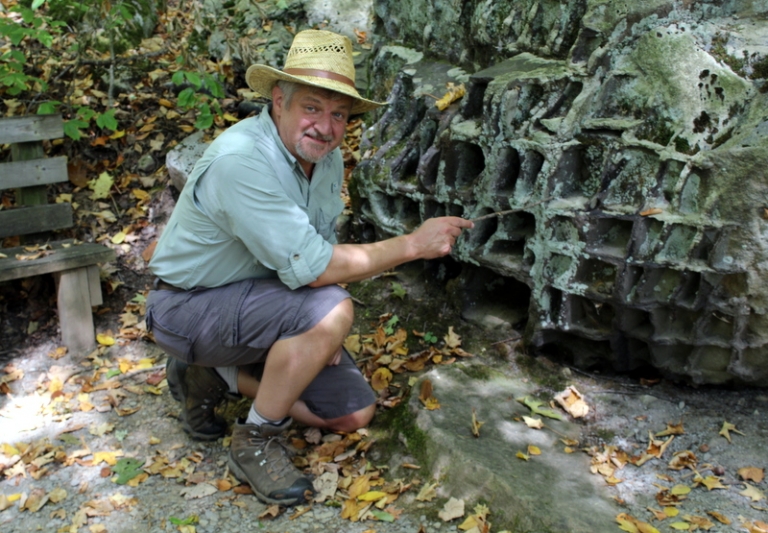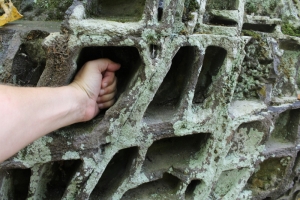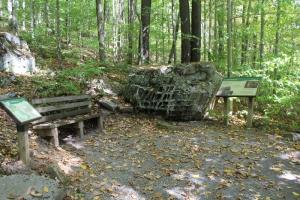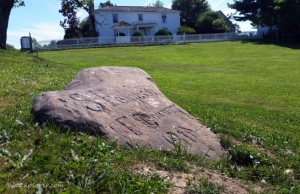
Wherever you turn in West Virginia, you're bound to find remarkable rocks, cliffs, and boulders, and some of them may appear bizarrely unnatural. One such astonishing garden of boulders hidden in the mountains of Pocahontas County appears so unnatural that it's hard to believe human hands haven't carved their surfaces.
Geometric forms—cones, trapezoids, and triangles—cover the surfaces of these boulders, in places creating lattices and honeycomb patterns that won the boulder-field the name "Honeycomb Rocks."

Naturalists working in cooperation with the Monongahela National Forest have opened a trail through their midst that the curious can stroll while reading a series of wayside markers that explain their origins.
Most simply put, the honeycomb rocks are formed by two geologic processes—folding and weathering. Many mountains in eastern West Virginia were created in some part by folding and bending, processes that in some cases, such at Seneca Rocks, turned layers of rock up on their ends.
Folding and bending here caused the rocks to fracture along two planes. Water then slowly filtered in along the fractures, and in this case carried iron, which was deposited in the fractures, causing the rock along the fractures to harden into a stone called hematite.
The resulting lattice of hematite is known as a quartz boxwork hematite deposit. Weaker sandstone among the lattice, known as kaolinite, was more easily eroded into the box-like pits.
According to the best estimates, the sediment that hardened into the rocks was laid down some 320 to 360 million years ago, while the fracturing occurred some 200 million years ago. Similar rock formations, though rare, are located elsewhere in the eastern state.
The boulders along the Honeycomb Rocks Trail have tumbled hundreds of feet down from a layer of honeycombed rocks nearer the summit of Tea Creek Mountain, one of the Allegheny Mountains, which rises to 4,351 feet above sea level.

The trail is located along the Highland Scenic Highway 1.3 miles east of the Williams River Bridge. A trail marker and trailhead parking area with wheelchair access are located along the highway. A graveled path with a grade of five percent or less leads a quarter of a mile through the forest to several boulders. Visitors should allow 45 minutes for a leisurely stroll.
The trailhead is a drive of approximately 15 miles or 25 minutes from Marlinton, West Virginia, and 40 miles or 50 minutes from Richwood.
The Honeycomb Rocks are located in one of the most remote high-elevation areas in West Virginia, and though the highway is a paved two-lane route, snow removal is not provided, so visitors should exercise caution when visiting during winter.
For more information, contact the U.S. Forest Service in Marlinton at 203-799-4334. A brochure with illustrations and directions is available through the forest service.
Mysterious Ferguson's Rock becomes a Beckley attraction

Questions may always surround a mysterious inscribed boulder that's become the subject of a preservation effort for a group of historians in Raleigh County. No one may ever know how it came to be along a wagon road in one of the most remote corners of the county—deep in its Piney Creek Gorge.
Read: Mysterious Ferguson's Rock becomes a Beckley attraction
Sign up to receive a FREE copy of West Virginia Explorer Magazine in your email weekly. Sign me up!




























